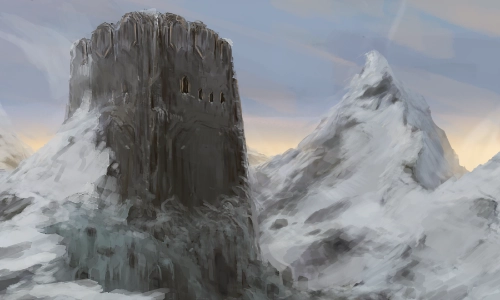Balor of the Evil Eye, Unmasking Ireland’s Darkest Legend
Irish mythology is filled with fascinating stories and unforgettable characters. From heroic warriors and wise druids to magical beings and ancient gods, these tales offer a rich glimpse into Ireland’s past and the mysteries of its ancient beliefs. Among these characters, Balor of the Evil Eye is one of the most potent and terrifying figures.
Known as the king of the Fomorians, a race of fierce and chaotic beings, Balor possessed a deadly weapon: a single eye with the power to kill anything it looked upon. In this post, we’ll explore who Balor was, the legends surrounding him, and how his “Evil Eye” became one of the most feared forces in Irish mythology.
Table of Contents
The Fomorians: Balor’s People
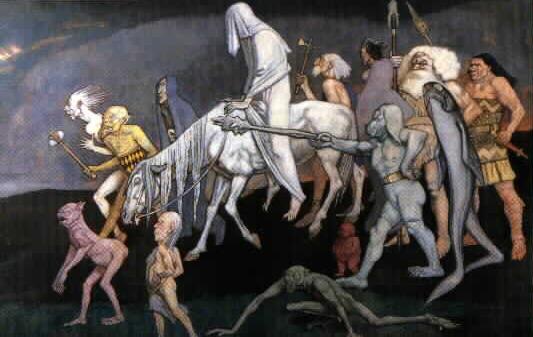
In Irish mythology, the Fomorians were an ancient race known for their chaotic and often monstrous appearance. They were seen as a dark, untamed force, representing the wild side of nature—storms, blight, and anything that could bring destruction. Unlike the more civilised Tuatha Dé Danann, who represented art, wisdom, and order, the Fomorians symbolised the natural world’s unpredictable and often dangerous power.
With his deadly “Evil Eye,” Balor was one of the Fomorians’ most feared and powerful leaders. As a king among these fearsome beings, he embodied the destructive strength that made the Fomorians formidable. Under Balor’s rule, the Fomorians clashed with other tribes. They spread fear across Ireland, making him one of the most infamous figures in Irish legend. His power, combined with the danger of his Evil Eye, made him a threat to his enemies and anyone who crossed his path.
For more information, please read my article on the Fomorians.
Balor’s Evil Eye
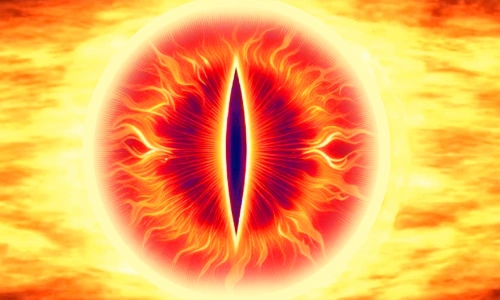
Balor’s most terrifying feature was his Evil Eye. This eye had the incredible power to kill or destroy anything it looked upon. Whether it was an army, a field of crops, or even a person, the moment his eye made contact, it unleashed deadly destruction. It was said that the eye could cause the land to wither and people to drop dead from its gaze. This deadly power made Balor one of the most feared figures in Irish mythology.
But how did Balor of the Evil Eye gain such an extraordinary ability? Some stories say his eye became so powerful after he saw a potion brewed by druids or sorcerers, which transformed it into a force of pure devastation. Others suggest that it was a curse or magic that he inherited or somehow acquired. Either way, once his eye was charged with this deadly power, it became almost impossible for him to control.
In fact, Balor’s Evil Eye was so dangerous that he couldn’t always keep it open. It was incredibly heavy and difficult to manage, so he had servants who helped him lift it when needed. Balor had to be careful despite its strength, as even a single wrong movement could cause destruction. This made his power both a blessing and a burden. While it made him nearly invincible, it also limited his control over his own fate.
The Prophecy of Balor’s Downfall
A prophecy hung over Balor of the Evil Eye, one that foretold a tragic end: he would be killed by his own grandson. This chilling prediction came from wise druids, and Balor, a king who feared losing power, took it very seriously. Determined to stop the prophecy from coming true, he made a drastic decision—he locked away his daughter, Ethniu (Eithne), in a high tower, far from the world. He hoped that by keeping her isolated, she would never have the chance to marry or have children, thus preventing the birth of the grandson who would bring about his death.
However, fate has a way of unfolding, no matter how hard we try to stop it. While imprisoned, Ethniu secretly fell in love with Cian, a member of the Tuatha Dé Danann, Ireland’s race of gods and heroes. Together, they had a child, who was none other than Lugh, a future hero and the key to Balor’s downfall.
Though Balor tried to control the situation, he couldn’t stop the prophecy from coming true. Lugh, raised in secret away from his grandfather’s reach, would one day grow into a mighty warrior who would challenge the Fomorians—and ultimately defeat the tyrant Balor, fulfilling the prophecy that had haunted him.
The Battle of Mag Tuired: Balor vs. Lugh
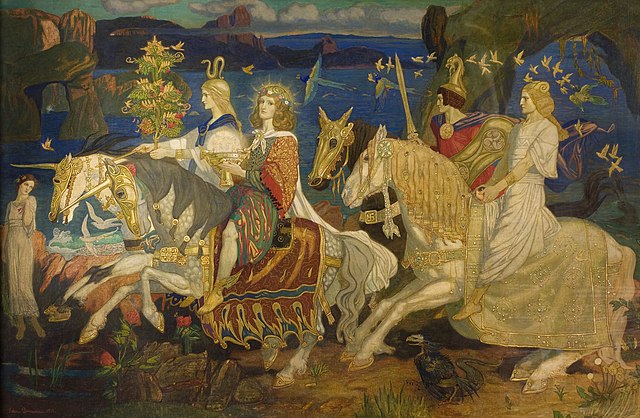
The Second Battle of Mag Tuired (Cath Maige Tuired) was a legendary clash between the Tuatha Dé Danann, the race of gods and heroes, and the Fomorians, the chaotic and monstrous beings led by Balor. This battle was one of the most critical moments in Irish mythology, as it was not just about power but fate. The Tuatha Dé Danann fought to protect their land and people from the Fomorians, who sought to dominate and destroy them.
At the heart of this battle was a climactic showdown between Balor and his grandson, Lugh. Lugh, now a mighty warrior and leader of the Tuatha Dé Danann, had come to confront the man who had tried to stop his birth. When Lugh faced Balor on the battlefield, he knew that the prophecy—that Balor would be killed by his own grandson—was about to come true.
Balor, with his deadly Evil Eye, was a terrifying sight. He opened his eye, and its destructive power began to scorch the earth. But Lugh, quick and clever, saw his chance. He used a slingshot or a spear (depending on the version of the story) and aimed directly at Balor’s Evil Eye. With incredible skill, Lugh struck the eye, killing Balor instantly. The force of the blow fulfilled the prophecy, and Balor’s reign of terror ended.
This moment marked a turning point in the battle. With Balor’s death, the Fomorians lost their most powerful leader, and the Tuatha Dé Danann were able to defeat them. The battle was a victory not just for Lugh but for the forces of order and light over chaos and destruction. It was a victory that fulfilled the prophecy and changed the course of Irish mythology forever.
Symbolism and Legacy of Balor
Balor is more than just a fearsome character in Irish mythology—he represents chaos, destruction, and the uncontrollable forces of nature. His Evil Eye, with the power to destroy anything it gazes upon, makes him a symbol of pure, raw power that can bring harm without warning. In many ways, Balor embodies the destructive side of nature: storms, floods, or any force that can tear apart what is peaceful or ordered. His presence in the myth serves as a reminder of how dangerous and unpredictable the world can be when left unchecked.
Balor’s contrast with Lugh is a key part of his story. While Balor symbolises destruction, Lugh represents light, creativity, and skill. Lugh is the hero who uses his intelligence and strength to overcome the chaos that Balor brings. Where Balor’s power is blind and deadly, Lugh’s abilities are focused and purposeful.
This contrast is essential to the story, as it shows how order and wisdom can overcome the forces of chaos. Lugh’s triumph over Balor is often seen as the victory of civilisation, culture, and reason over nature’s wild and destructive aspects.
With its powerful imagery of light battling darkness, Balor’s story tells how chaos and destruction must be controlled for peace and growth to thrive. His defeat by Lugh marks a turning point, symbolising the power of human creativity and strength to tame the uncontrollable forces of the world. Today, Balor remains a symbol of the darker side of nature. Still, his defeat also serves as a reminder of hope—that order can be restored even in the face of chaos.
Balor in Irish Folklore and Culture
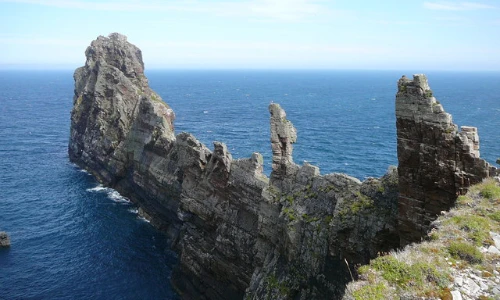
Balor’s influence extends beyond his myth, and he remains a notable figure in Irish folklore and culture today. His story continues to be told and retold, often as an example of the clash between chaos and order, destruction and creation. Over the centuries, his terrifying image has been a powerful symbol in Irish storytelling, and his Evil Eye has become one of the most memorable elements in Irish mythology.
Balor’s legacy can be seen in later Irish legends and other folklore worldwide. The idea of a powerful, monstrous figure whose gaze brings destruction is echoed in stories from different cultures, such as the Medusa myth in Greek mythology, where Medusa’s gaze turns people to stone. This similarity suggests that the fear of dangerous beings with powers of deadly vision is a common thread in many traditions.
Balor’s story is often remembered in Irish culture in literature, art, and even modern mythology interpretations. His defeat by Lugh is seen as a symbol of the victory of light over darkness. This theme continues to resonate in Irish tales and even contemporary culture. Whether in poems, songs, or modern retellings, Balor remains a figure who captures the imagination and serves as a reminder of the struggle between destructive forces and the hope for order and peace.

